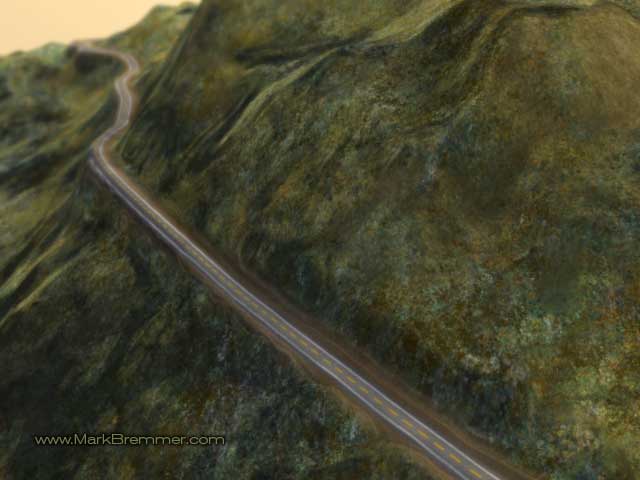Renderosity Forums / Carrara
Welcome to the Carrara Forum
Forum Coordinators: Kalypso
Carrara F.A.Q (Last Updated: 2025 Jan 04 8:20 pm)
Visit the Carrara Gallery here.
Subject: Add a textured road to your terrain!
Mark,
Thanks for sharing :)
---------------------------------------
Holyforest,
Hundreds of shaders for
Carrara
Hi UVDan,
I do use the h.264 QT codec so your QT may simply need to be updated. (It's free - http://www.apple.com/quicktime/)
I do know that VTC compresses the movies to the lowest common denominator for video viewing on the Web for obvious reasons. I don't do that. However, I can fit twice as much content with better clarity within the same Megabytes. Ergo, my choice for h.264. :-P The Web always bites back somehow.
Mark

There is a couple of things that may be going on but I can't tell you for sure. Part of this may be a larger answer than you were looking for. ;-)
-
before rendering, make sure you engage the subdivision smoothing by checking the box in the upper right hand corner of the terrain modeler and increasing it's division to 2 or 3. Carrara also doesn't like it when you change scale mid project and try to execute methods like this. How you've worked your file is the big unknown for me.
-
for the textures, map "density" or pixels per inch/cm is more important than scene size or map pixel size. This is a problem that is artfully managed in most TV and movie studios by deft camera moves and transitions with clouds or fade through on objects. Creating a one-size-fits-all texture map suitable to close ups and long shots is tough to do because creating enough pixels for the close up creates massive texture files that render slow. But you can try.
So here is what the math looks like - i'll use round numbers to make things easy on my soft brain. Screen resolution is usually 72 pixels per inch but let's pretend that its 100 pixels per inch. Now, if your terrain is 1000 pixels wide and you make your texture map 1000 pixels also. This means that we can't bring the camera in any closer than a view showing more than 1/10 of the texture map in the closest portion of the render (left to right). If we do, than it starts to pixelate and break up into squares upon render because of the resolution of the map. To keep textures clean with painting programs, you need to calculate how close you're bringing the camera in to the scene and adjust your texture maps accordingly. For close ups, it's not unreasonable to need texture maps (if your using our example) 20,000, by 20,000. This is not a smart thing to do for any 3D program because at render time it's going to calculate very slowly because of the sheer size of the texture map. It's also why in CG movies, you'll see an aerial shot followed by a quick cut to a close up that focuses on the vehicle (usually composited) with motion blur on the background elements to help disguise pixels.
Special effects, which is what you'd consider this, is both art and science - the art being how to use as few resources as possible and still make it work. Movie studios can do this in certain situations because they'll be running a render farm with 3000 quad core machines - t hat helps a bunch.
So, you may want to try doubling or tripling the size of your texture maps and see if that works. If it doesn't, pulling of some post render motion blurring using g-buffers or C7s new multi channel render filters in photoshop if it's a still shot or your video editing program if this is a motion file. You can also try reorganizing your scene to use a high resolution map up close and low resolution in the distance.
Privacy Notice
This site uses cookies to deliver the best experience. Our own cookies make user accounts and other features possible. Third-party cookies are used to display relevant ads and to analyze how Renderosity is used. By using our site, you acknowledge that you have read and understood our Terms of Service, including our Cookie Policy and our Privacy Policy.














Hi everyone,One of the most requested suggestions I get is how to create roads on Carrara terrains that look respectable. Well, now you can see one of the methods that I use over in the Carrara Dark Arts area.
Just let me know if you have any questions!
Mark